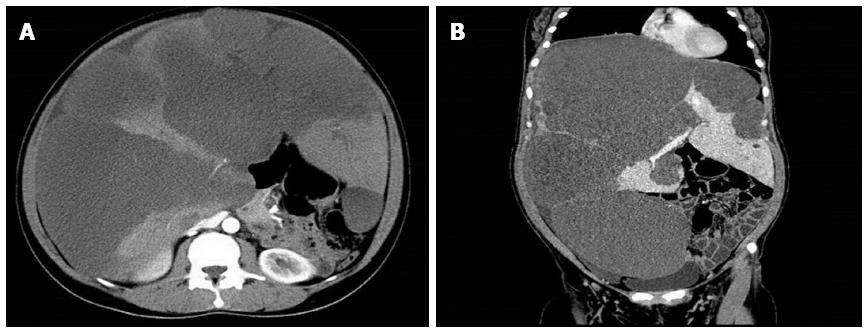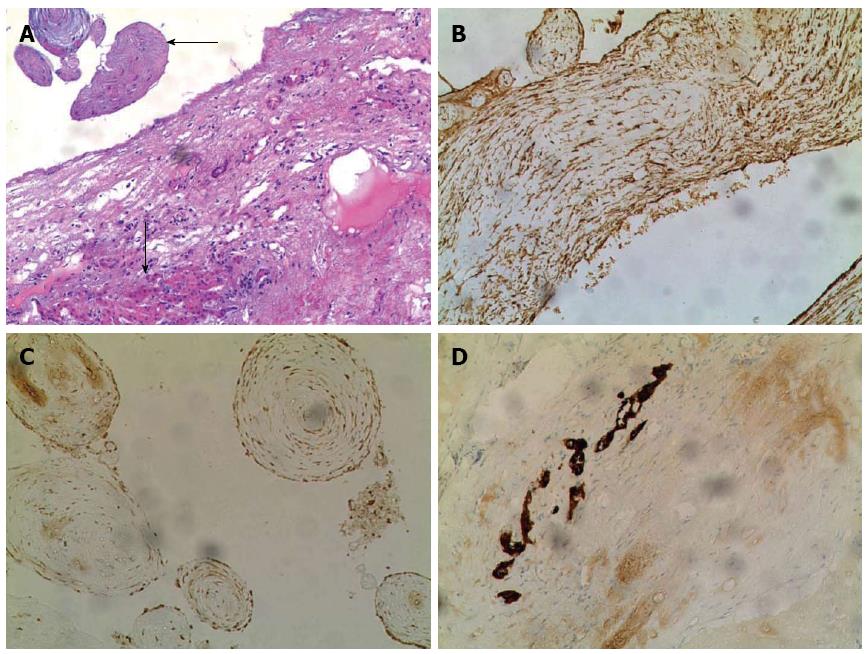Copyright
©The Author(s) 2015.
World J Gastroenterol. May 28, 2015; 21(20): 6409-6416
Published online May 28, 2015. doi: 10.3748/wjg.v21.i20.6409
Published online May 28, 2015. doi: 10.3748/wjg.v21.i20.6409
Figure 1 Contrast enhanced computed tomography of the abdomen revealed the near replacement of the liver with diffuse cystic masses of low density.
A: Enhanced computed tomography scan shows the near replacement of the liver with diffuse cystic masses, leaving only small amounts of liver parenchyma. The portal vein and inferior vena cava are obviously compressed; B: The massively enlarged liver essentially occupies the entire abdominal cavity, with other abdominal organs being compressed and displaced.
Figure 2 Intraoperative view of the tumor mass (A) and the excised liver (B).
Figure 3 View of the operative field after liver transplantation, demonstrating the well-perfused liver graft.
Figure 4 Clear boundary between liver parenchyma and proliferating connective tissue.
A: The mass consisted of loose connective tissue full of myxoid matrix forming visible cysts (upper arrow). Small amounts of remaining liver tissue, with a lack of lobular architecture, were located in peripheral areas (lower arrow) (HE, original magnification × 100); Myxoid stroma with spindle cells showing smooth muscle differentiation were confirmed by positive staining for vimentin (B) and smooth muscle actin (C) (original magnification × 100); Benign dilated bile ducts were confirmed by positive staining for cytokeratin 7 (D) (original magnification × 100).
- Citation: Li J, Cai JZ, Guo QJ, Li JJ, Sun XY, Hu ZD, Cooper DK, Shen ZY. Liver transplantation for a giant mesenchymal hamartoma of the liver in an adult: Case report and review of the literature. World J Gastroenterol 2015; 21(20): 6409-6416
- URL: https://www.wjgnet.com/1007-9327/full/v21/i20/6409.htm
- DOI: https://dx.doi.org/10.3748/wjg.v21.i20.6409












